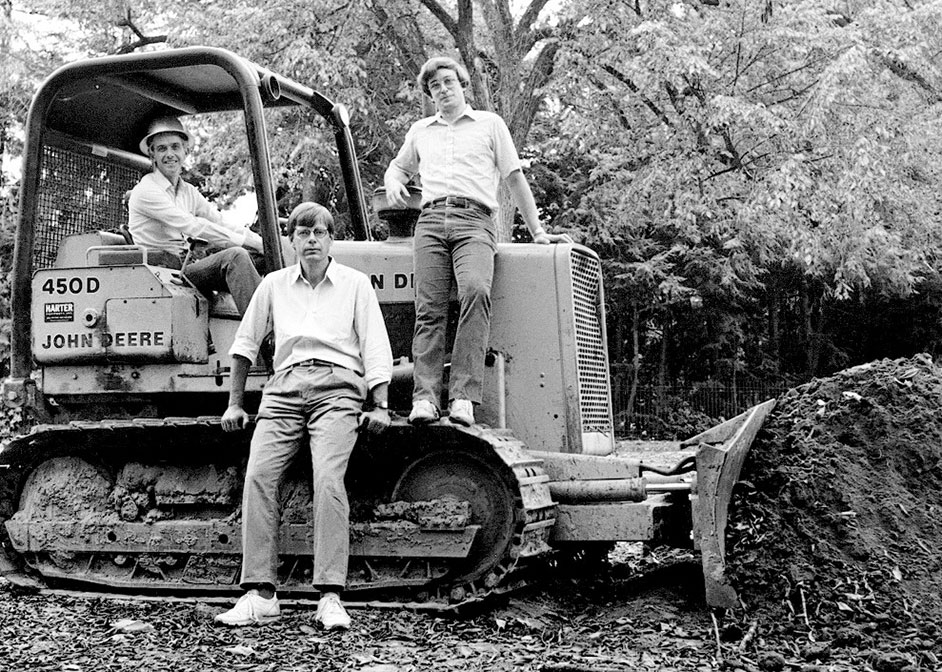Award Presented by AAPG’s Petroleum Structure and Geomechanics Division
Each year, the Petroleum Structure and Geomechanics Division (PSGD) of the American Association of Petroleum Geologists recognizes papers that are seminal to their field.

On October 2, PSGD presented the 2020 Best Seminal Paper Award to John Suppe, distinguished professor at the University of Houston’s Department of Earth & Atmospheric Sciences, Dan Davis of SUNY Stony Brook, and the late Tony Dahlen of Princeton University. The award was presented online by the PSGD as part of the AAPG Annual Meeting.
The award recognized three of their classic papers from the 1980s on the mechanics of fold and thrust belts and accretionary wedges. This work showed that the mechanics and kinematics of mountain belts is akin to that of a wedge of soil or snow that forms ahead of a bulldozer blade.
Papers Recognized with Best Seminal Paper Award
- Davis, D., Suppe, J., and Dahlen, F., 1983, Mechanics of fold-and-thrust belts and accretionary wedges: Journal of Geophysical Research, v. 88, p. 1153-1172.
- Dahlen, F., Suppe, J., and Davis, D., 1984, Mechanics of fold-and-thrust belts and accretionary wedges: cohesive Coulomb theory: Journal of Geophysical Research, v. 89, p. 10087-10101.
- Dahlen, F. and Suppe, J., 1988, Mechanics, growth and erosion of mountain belts: Geological Society of America Special Paper 218, p. 161-178.
The papers were nominated by Peter Hennings of The University of Texas at Austin.
Hennings wrote the following citation for the award presentation:
Occasionally the steady cadence of science leaps forward when the fundamental building blocks of hypothesis, observation, and physical relationships are brought together forcefully. This occurred in the 1980s when Dan Davis, John Suppe, and Francis Dahlen Jr. collaborated to propose that controlling mechanics of thrust belts and accretionary wedges could be elegantly explained by invoking a combination of effective stress and frictional mechanics within a simple geometric configuration akin to a wedge of sand or soil being bulldozed. Their first paper, in 1983, observations of crustal-scale examples, including the neotectonics of Taiwan, and physical models, coupled with effective stress from Hubbert and Rubey (1959) and frictional strength from Byerlee (1978) and Jaeger and Cook (1969) provide us with the “frictional wedge” that so many of us envision when interpreting contractile systems in the field or subsurface. Here we learn that contractile wedges grow self-similarly, the degree of variation in taper angles from global examples, and what the internal and external controls are. A year later in 1984 the authors extended the work by determining the state of stress everywhere within a critical wedge and considering cohesion, which gives rise to variation in the shape of the wedge envelope and affects the orientation of the principal stresses within it. Finally, in 1988 Dahlen and Suppe provide the third installment where they investigate the kinematic development of the wedge, how material moves and deforms within it, and the significant impact of erosion.
A couple of months ago I was working with a UT PhD student who was adding kinematic analysis of a regional thrust belt cross section to help explain some zircon provenance data. The student was rightfully alarmed that there was no constraint on the eroded domain, and therefore no means to validate the section by restoration. I recommended review of the 3 papers highlighted here. The student came back to me with elation and gratitude, misplaced of course. My gratitude to Dan Davis, Francis Dahlen, and John Suppe for helping me understand thrust belt mechanics!
Read John Suppe and Dan M. Davis Response to the Hennings Citation